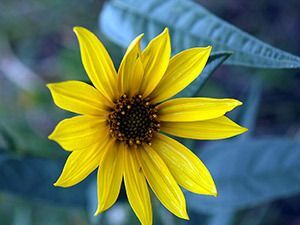Maximilian Sunflower

Helianthus maximiliani
Family: Asteraceae (Aster Family)
Maximilian Sunflower (Helianthus maximiliani) is a striking, tall native perennial known for its vibrant yellow blooms and its ability to attract pollinators. This hardy sunflower thrives in a variety of habitats across Texas, including Southeast Texas, and is an excellent choice for prairie restoration, erosion control, and wildlife gardens.
- Scientific Name: Helianthus maximiliani
- Common Names: Maximilian Sunflower
- Family: Asteraceae (Aster Family)
- Growth Habit: Upright, clumping perennial
- Height: 3-10 feet
- Leaves: Narrow, lance-shaped, gray-green
- Flowers: Bright yellow, daisy-like blooms with a central brown disk
- Bloom Time: Late summer to fall
- Wildlife Benefits: Attracts bees, butterflies, and birds; seeds provide food for songbirds
Habitat & Range in Southeast Texas
Maximilian Sunflower is commonly found in:
- Prairies & Grasslands: Thrives in open areas with full sun
- Roadsides & Fields: Often seen growing in disturbed soils
- Wetlands & Riparian Zones: Can tolerate occasional flooding
- Drought-Prone Areas: Very resilient once established
This species is highly adaptable and can grow in sandy, loamy, and clay soils with varying moisture levels.
Ecological Importance
- Pollinator Magnet: Provides nectar for bees, butterflies, and other beneficial insects.
- Bird-Friendly: Seeds are a favorite among finches and other small birds.
- Erosion Control: Deep roots help stabilize soil in disturbed areas.
- Deer Resistance: Generally unpalatable to deer, making it a good choice for natural landscapes.
Landscaping & Gardening Uses
Maximilian Sunflower is perfect for adding height and seasonal interest to native landscapes. It is used for:
- Wildflower Gardens: Provides brilliant fall color
- Prairie & Meadow Restoration: Supports local ecosystems
- Pollinator Gardens: Enhances biodiversity
- Erosion Control Projects: Prevents soil loss on slopes
Planting & Care
- Sunlight: Full sun
- Soil: Well-drained, adaptable to different soil types
- Water Needs: Low to moderate; drought-tolerant once established
- Maintenance: Low; may require cutting back in winter to encourage fresh growth
- Companion Plants: Grows well with Little Bluestem (Schizachyrium scoparium), Gulf Muhly (Muhlenbergia capillaris), and Purple Coneflower (Echinacea purpurea)
Fun Facts
- Named after Prince Maximilian of Wied-Neuwied, a German naturalist who explored North America in the 1830s.
- Its tall, sturdy stems were used by Native Americans for making fiber and mats.
- Maximilian Sunflower is a key plant in prairie restoration due to its deep-rooted structure.
Conservation & Native Plant Advocacy
Using Maximilian Sunflower in landscapes helps support local pollinators, restore prairie ecosystems, and reduce dependence on non-native ornamental plants. It plays a crucial role in habitat restoration efforts in Texas.
Where to Find It
-
Interested in adding Maximilian Sunflower to your garden? Check if this is in stock or add to cart to purchase directly from our Natives Nursery.


